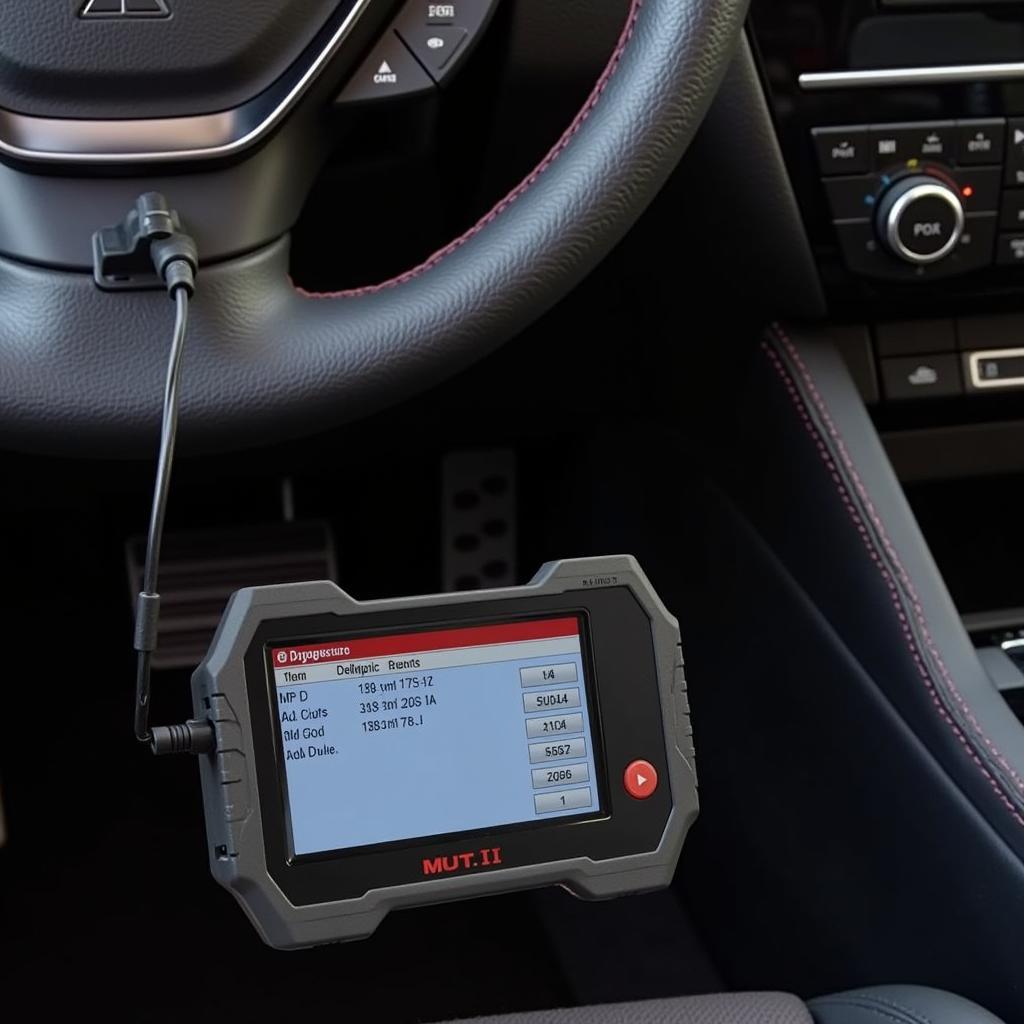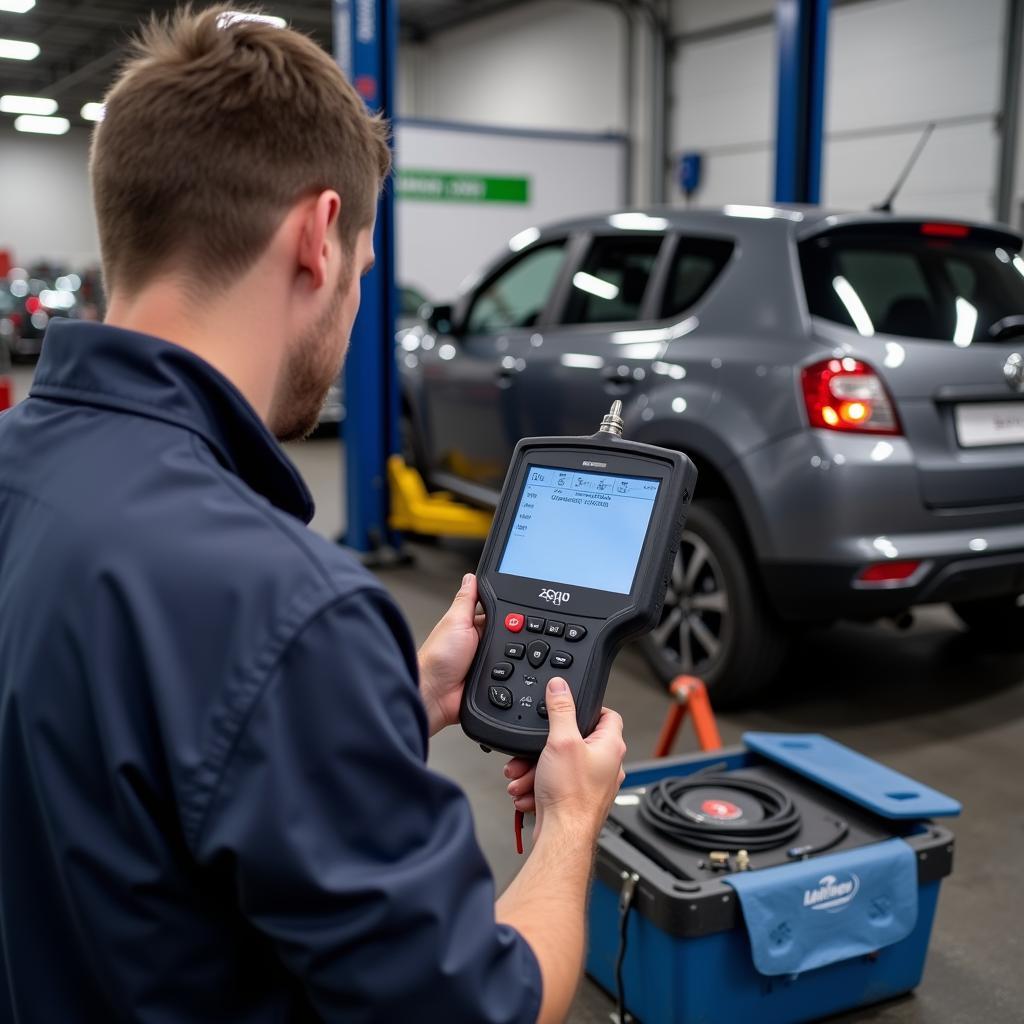A Transmission Fluid Temperature Scan Tool is an essential diagnostic instrument for anyone who owns, repairs, or maintains vehicles. This tool allows you to monitor the transmission fluid temperature in real-time, helping you identify potential problems before they escalate into major repairs.
One of the first things to understand is that your vehicle’s transmission system relies on fluid to function correctly. This fluid lubricates moving parts, conditions seals, and most importantly, helps to dissipate heat. Overheating is a common cause of transmission problems, and a transmission fluid temperature scan tool can alert you to this issue before it causes significant damage.
Why is Monitoring Transmission Fluid Temperature Important?
Your vehicle’s transmission system operates under extreme conditions, generating a significant amount of heat. While some heat is normal, excessive heat can degrade the transmission fluid, leading to:
- Reduced lubrication: Overheated transmission fluid loses its viscosity, becoming thinner and less effective at lubricating the transmission’s moving parts. This can lead to increased friction, wear, and tear.
- Damaged seals: High temperatures can cause the seals within the transmission to harden and crack, leading to fluid leaks.
- Clutch and band failure: The clutches and bands inside the transmission are particularly susceptible to heat damage. Overheating can cause them to slip, wear out prematurely, or fail altogether.
By using a transmission fluid temperature scan tool, you can ensure that your transmission fluid stays within a safe operating temperature range, preventing costly repairs and extending the life of your transmission.
How to Use a Transmission Fluid Temperature Scan Tool
Using a transmission fluid temperature scan tool is a straightforward process:
- Locate your vehicle’s OBD-II port. This port is typically located under the dashboard on the driver’s side.
- Plug the scan tool into the OBD-II port.
- Turn on the ignition but do not start the engine.
- Navigate to the transmission fluid temperature reading on the scan tool. This may require you to scroll through a few menus.
The scan tool will display the current transmission fluid temperature.
Choosing the Right Transmission Fluid Temperature Scan Tool
There are many different types of transmission fluid temperature scan tools available on the market, from basic code readers to advanced professional-grade scanners. When choosing a scan tool, consider the following factors:
- Features: Some scan tools offer additional features, such as the ability to read and clear trouble codes, view live data streams from other sensors, and graph data over time.
- Compatibility: Ensure that the scan tool you choose is compatible with your vehicle’s make, model, and year.
- Ease of use: Choose a scan tool with a user-friendly interface and clear instructions.
Interpreting Transmission Fluid Temperature Readings
The ideal operating temperature for transmission fluid varies depending on the make and model of your vehicle, but generally falls between 175°F to 225°F (80°C to 107°C). Temperatures consistently exceeding 240°F (115°C) indicate a potential problem that requires further investigation.
Common Causes of High Transmission Fluid Temperature
If your transmission fluid temperature is consistently high, there are several potential causes, including:
- Low fluid level: Insufficient transmission fluid can cause overheating.
- Dirty fluid: Over time, transmission fluid can become contaminated with debris and lose its effectiveness.
- Faulty transmission cooler: The transmission cooler is responsible for cooling the fluid; if it’s not working correctly, the fluid can overheat.
- Towing beyond capacity: Towing heavy loads puts extra strain on the transmission, generating more heat.
- Aggressive driving: Frequent hard acceleration and braking can also lead to transmission overheating.
Expert Insights
“I’ve seen countless transmissions fail prematurely due to overheating,” says John Smith, a veteran automotive technician with over 20 years of experience. “Investing in a quality transmission fluid temperature scan tool and regularly monitoring your fluid temperature is one of the most cost-effective ways to protect your transmission and avoid expensive repairs.”
Preventing Transmission Overheating
Here are some tips to help prevent transmission overheating:
- Check your transmission fluid regularly. Refer to your owner’s manual for the recommended service intervals.
- Change your transmission fluid as recommended. Follow the manufacturer’s recommendations for fluid type and change intervals.
- Install an aftermarket transmission cooler. If you frequently tow heavy loads or engage in aggressive driving, consider installing an aftermarket transmission cooler to provide additional cooling capacity.
- Avoid prolonged idling in hot weather.
- Have your transmission serviced by a qualified mechanic.
autoenginuity scan tool total ford bundle st06 & ei01
Conclusion
A transmission fluid temperature scan tool is an invaluable tool for maintaining the health and longevity of your vehicle’s transmission. By monitoring your transmission fluid temperature, you can detect potential problems early on and take steps to prevent costly repairs.
If you have any concerns about your transmission or need assistance choosing the right scan tool, don’t hesitate to contact the experts at ScanToolUS. We offer a wide range of high-quality scan tools and expert advice to help you keep your vehicle running smoothly.
Contact us at: +1 (641) 206-8880 or visit our office at 1615 S Laramie Ave, Cicero, IL 60804, USA.


